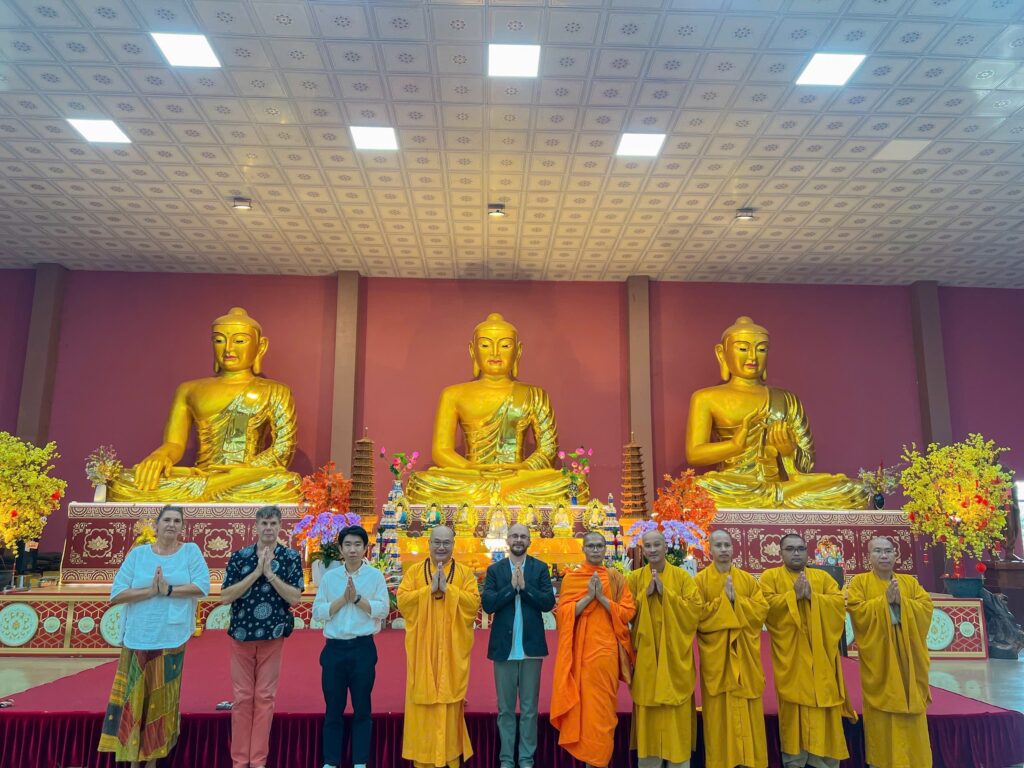
It is modest and restrained, elegant, and puritanical. It is like the Pali language: soft and simple. But it is not oppressive and cold; it is very human. Human in the sense that it shows what human life is like, why happiness is so unhappy. And since human life is what it is, the pastel sadness is understandable. It is as sad as King Ashoka in the accompanying image. Early Buddhism is well aware of the miseries of human life, but it doesn’t focus on them; rather, it focuses on what the Buddha offers against them. The problem is that the Buddha recommends the ideal of a monk who has withdrawn from worldly life, which only a few can and want to follow. But fortunately, while the Pali texts (suttas, commentaries) tell us, or try to tell us, what the Buddha recommends, many extremely exciting things come to the surface. For example, what makes up a person, whether there is an eternal soul, what can be done with passions, or whether children were playing marbles in Benares 2400 years ago. The Buddha did not teach in Pali, but probably in a very similar language. The texts that we read within the scope of the specialization certainly contain something of what the Buddha said, perhaps even word for word. Is there anything more exciting than reading the words of such a sensitive, smart, and wise teacher in the original? And reading it in the original makes a huge difference!
The core curriculum of the BA program covers the entire history of Buddhism, discussing culturally and linguistically different (Pali, Sanskrit, Chinese, Japanese, Tibetan) traditions and schools. The curriculum is organized in chronological order, meaning that in the first year, the emphasis is on the original teachings of the Buddha. This actually refers to the teachings that can be found in the Pali language texts of the Theravada canon. The Pali language specialization aims to delve deeper into this body of knowledge.
The Pali canon essentially reflects the perspective of one school, so the study of the original teachings of the Buddha and the canonical Theravada tradition formally coincide, but in terms of content, they can be somewhat separated. The fascinating field of early Buddhism not only deals with the person of the Buddha, his life path, and teachings, but also attempts to uncover the cultural and philosophical precedents (Indus Valley, Greater Magadha, and Western Vedic culture), and simultaneously examines contemporary developments of the Buddha’s time (Jainism, Brahmanical tradition, Sankhya, etc.). In addition, it studies the development of the textual tradition, and the texts themselves, from the perspectives of historical, philological, linguistic, content, etc. Furthermore, since the canon evolved over a long period of time, it helps trace the formation of the early Sangha, the beginning of the institutionalization of Buddhism, and of course, the formation of the Buddhist idea and early Buddhist philosophy, all the way to the profound change signified by the schism of the Sangha, which marked the shift of Buddhism’s geographical center to the northwest, where it switched to the use of Sanskrit and eventually evolved into Mahayana.
The Pali language specialization, within the limits of the curriculum, undertakes the study of early Buddhism. The acquisition of general knowledge about this period is entrusted to the core curriculum, so the specialization specifically focuses on the Pali language. Its goal is to familiarize students with the Pali language and to develop advanced linguistic proficiency through the direct study of the sources. The first semester begins with a preparatory course aimed at introducing the basic structure and feel of the language, helping students understand the time requirements and difficulties involved in learning the language, and clarifying whether they have enough motivation for the subsequent five semesters of intensive study, which require two 90-minute contact hours per week. In practice, the specialization initially means language lessons, and later, reading sessions. The language learning phase is based on relatively simple, preparatory texts, which are entertaining stories from the Jataka tales (Buddhist birth stories) and excerpts from the Milindapanha. The reading sessions involve the study of suttas, specifically those texts from the Pali canon that belong to the earlier layer and most closely reflect the Buddha’s teachings. We aim to explore the suttas not only linguistically but also in their full content and cultural depth, thereby complementing and deepening the knowledge acquired in the core curriculum. The specialization requires English reading skills, especially in later semesters, both for using dictionaries and for accessing high-quality scholarly literature.